When I found out that I had to take a Spanish linguistics course in college, I was pretty annoyed. Linguistics sounded mind-numbingly boring, and…it kinda was. 😛
But what I didn’t know is that—years later—that course would actually help me become a better reading and phonics teacher!
Let’s back up a little. My undergraduate majors in college were Elementary Education and Spanish. The Spanish major required that I take all kinds of history and literature and language courses—hence the linguistics class that I dreaded so much.
Somehow, I passed the class. 🙂 And I graduated and started teaching Pre-K and then Kindergarten (in English).
I knew embarrassingly little about teaching phonics in English (sorry, kids!), but I stumbled and fumbled my way through. Somehow those Kinders learned how to read!
After a couple of years, I moved to a new school for a bilingual Kindergarten position, where I was teaching reading in Spanish. And all of a sudden….DING! The lightbulb went on. I felt much more confident teaching phonics in Spanish because I knew the ins and outs of the language. I understood how words were divided up into syllables, where the accent marks should go, what diphthongs were, and all that good stuff. It turns out that the linguistic course wasn’t such a waste after all! 😉
Anyway, you might be thinking, “Okay…so what’s the point of all this?” Here’s what I’m trying to show:
When I had a deeper understanding of the structure of the language, I was a better phonics and reading teacher. When I didn’t have a deep understanding of the structure of the language (even though I’ve spoken English all my life), I wasn’t well equipped to provide strong, clear phonics instructions.
Although my undergraduate reading education program was good (and so was my graduate degree in reading/literacy leadership), in hindsight, I wish that I’d learned more about the structure of the English language and how to teach phonics to my students.
I’ve had to figure out a lot on my own. I’ve also taken 30 hours of Orton-Gillingham training. I wanted to do all this to become a better teacher, but wouldn’t it make more sense if this information was shared with EVERY elementary or early childhood teacher during their degree program?
If you’re in the same boat that I was and would like to learn more about the structure of English and teaching phonics, then you’re in the right place! This is the first post in a series about phonics. In today’s post, I’m going to share 5 essential things about teaching phonics that I wish I’d learned in college!
 Photo Credits: Joaquin Corbalan P, Shutterstock
Photo Credits: Joaquin Corbalan P, Shutterstock
1. One in five students NEED explicit, systematic phonics instruction (that uses multisensory techniques) in order to become proficient in reading.
Systematic, explicit phonics instruction is important for all students. But at least 20% of our students show signs of dyslexia. Many of those students will not become fully proficient readers unless they have clear, systematic, and explicit phonics instruction. This means that we need to teach sound and spelling patterns in an order that’s developmentally appropriate, incorporate frequent review, and show students how to apply that knowledge to reading and writing. Students with dyslexia also benefit from multisensory phonics instruction (instruction that incorporates multiple senses; for example, tracing a word in the air while simultaneously spelling it aloud).
2. Students are better equipped to decode words when they know syllable division rules.
For a long time, I didn’t know the syllable division rules for English. Nor did I understand that knowing the rules can help readers figure out vowel sounds and decode words! I’ll address the syllable division rules in a future post.
3. There are 6 different types of syllables in the English language.
That’s it—only 6! Students benefit from learning the 6 syllable types and knowing how to use them to decode words. In a future post, I’ll explain more about the syllable types.
4. Multisensory phonics instructional techniques (that are sometimes deemed “for special education”) are fun and useful for ALL students.
In #1, I mentioned that 20% of kids show signs of dyslexia and need multisensory phonics instruction. You may not know (at least not at the beginning of the year) which students fall into this 20%. However, ALL students benefit from learning phonics in a systematic, explicit way, through multisensory techniques. So you can use this “stuff” with everyone!
5. We can predict (some) reading difficulties at a rather early age.
This one’s for you, Kindergarten teacher friends! (And probably first grade teachers too.) If you notice that some of your students are really struggling with phonological awareness skills, this is an indicator that they may struggle with reading in the future. Researchers now believe that people with dyslexia have weaker phonological processing abilities than their non-dyslexic peers. Tasks like rhyming or segmenting words can be more difficult for students with dyslexia. But here’s the good news: when you know this, you can start providing extra support and interventions right away (like more phonological awareness instruction and practice).
What’s Next?
This post is just the tip of the iceberg. I have lots more planned for you! I hope that this series will help you feel more confident in teaching reading and phonics. And I’d love to hear from you in the comments if this is an area in teaching that you feel/felt under-prepared for!
UPDATE: The series is now complete! Read the rest of the posts here:
The 6 (or 7) Syllable Types: What They Are, Why They Matter, And When To Teach Them!
How to Teach Students to Divide Words into Syllables
5 Fun Short Vowel Activities That Only Take 5 Minutes
A Yearlong Guide to Teaching Phonics in Kindergarten
And if you’re looking for engaging, no-prep phonics activities for your K-2 students, check out my digital phonics bundles here:

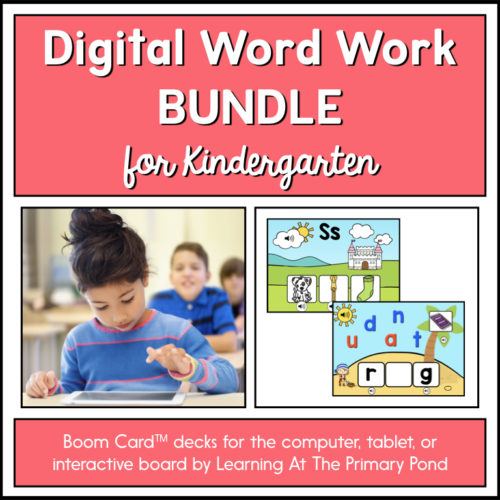
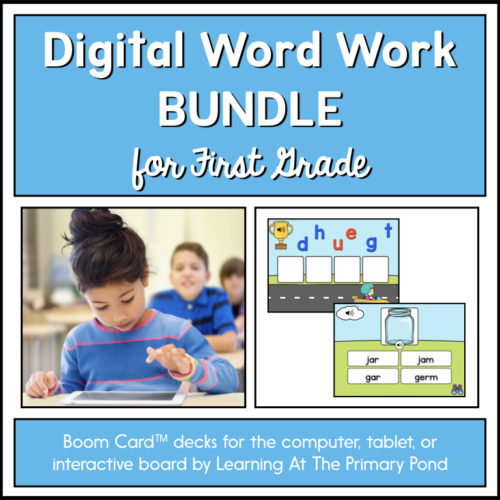
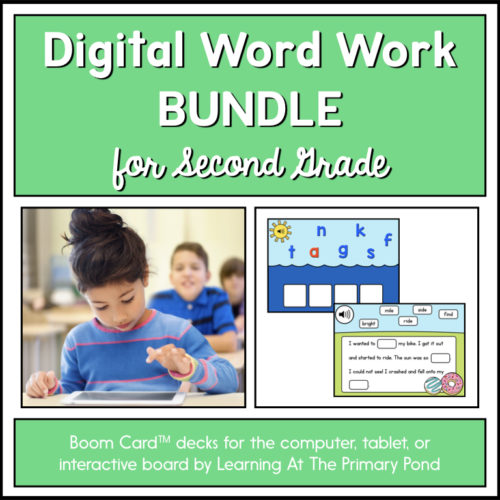

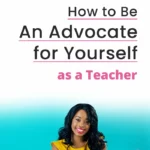

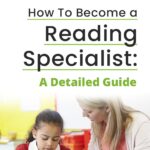
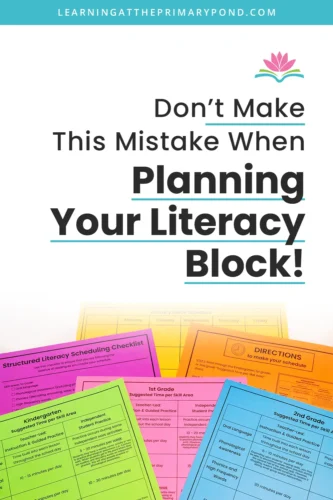
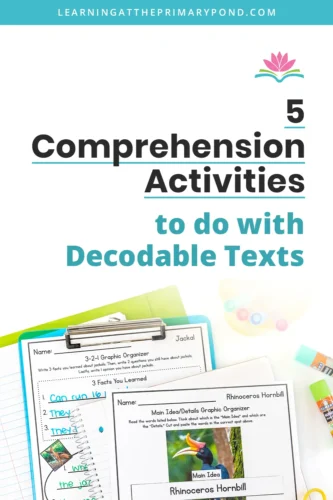
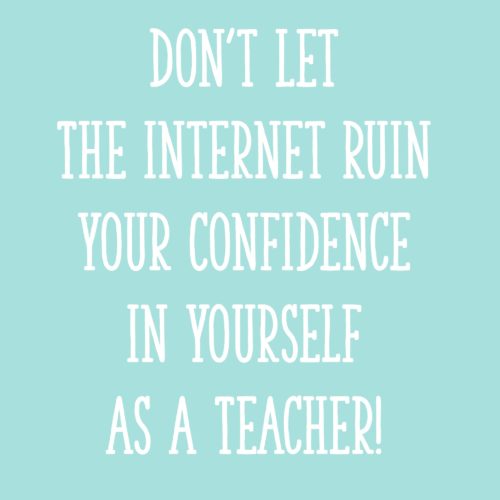






Do you know of a good phonics program?
Hi Melinda! I have used Words Their Way (Bear, Invernizzi, Templeton, Johnston) with success for my students. However, I do feel that some things are lacking, depending upon how it’s used. The program Fundations has some elements that I really like, though I’ve heard that it just takes a long time to implement on a daily basis (and like anything, has its flaws). Those might be a good starting place for you, though. 🙂
Alison
I have been teaching Fundations at the kindergarten level for 4 years. I love it, I am getting great results, but towards the end of the school year I do add in some more advanced pieces that I’ve created to keep it energizing and interesting. I also systematically and explicitly teach the phonics and phonological pieces of my districts adopted Language Arts curriculum.
Our district has recently adopted the Fountas and Pinnell phonics program. I haven’t done much with it yet, but the lessons are whole group with small group components that could be merged into your guided reading groups.
Fountas and Pinnel are very weak when it comes to phonics. You may want to supplement with something from a different program.
LOVE this post!! Literally cannot wait for the next post!! Thank you, thank you, thank you for this info!!
Yay! You’re welcome!! 🙂
Alison
I’m excited to read more! I taught middle school math for 5 years, then transitioned into a technology position for a few years. Now I’m back teaching special education resource to 3rd graders and need all the help I can get!
Hey Stephanie! That’s a big transition for sure!! I hope this series is helpful to you!! 🙂
Alison
Thanks so much for this post! I teach first grade in Queens, NY in an co-teaching classroom. We have a large range of readers in our room. Some students are just now mastering letter sounds and then some can read works with vowel teams and blends. My co teacher is a special ed teacher and does the Orton Gillianham sensory phonics program with our students with IEPs and our low levels readers. I always say the whole entire class could benefit from it. I do Fundations with my group. Can you give me any insight you have on these phonics… Read more »
Hey Lauren! That’s so great that the entire class gets the OG phonics instruction. SO awesome! I haven’t used Fundations personally, but I use its “sister” program, Wilson. All of the multisensory instructional activities are so helpful, and I also like to add in word sorts as a supplement. Thanks for reading!
Alison
I am looking forward to this series Allison! I also began my teaching career when best practices was teaching Whole Language. I feel so crazy when I think back on how unprepared I was to teach phonics! I have been working as a Reading Specialist for 6 years now and also never received training in the importance of teaching phonics in a systematic way to the students that struggle the most! I knew that guided reading was NOT moving my students forward, and how difficult it was for them to remember the sounds and patterns when reading and writing .… Read more »
Hey Margie! It IS odd how we (and I’m sure many other teachers) became reading specialists without having learned any of this. My programs were so strong in every other sense. Thank goodness for OG. 🙂
Alison
I am extremely excited about this post! My college education also did not prepare me for teaching phonics at all. My school does have a phonies program (fundations) but that is very rarely enough. Can’t wait for future posts!
Hey Kelly! I’m excited too!! Thanks for following along!!
Alison
THANK YOU! I will be starting my student teaching in Aug. Although I have classes under my belt I do not feel one ounce confident in teaching phonics. (I am hoping this comes with experience eventually) Also, I have two older children that have dyslexia and struggle with their phonological awareness hence in reading. I cannot wait for your other posts! PS if you’re in So Cal can I privately train with you.
Best Wishes,
Brooke
Hey Brooke! I do think it will come with experience, although I’ve definitely done a lot of research on my own to become better at teaching phonics. I wish I was in So Cal – it’s too cold here! 🙂 Thanks for reading!!
Alison
Yes, I’m so ready to read this! I cannot believe everything that I DID NOT learn in college. In my opinion, we weren’t taught the important stuff. I’ve figured out a lot on my own but would love to hear your information and the layout/order in which you teach. I am seriously looking into a phonics/awareness class to take but want to make sure it’s a good one!
Hey Allison! Awesome! I would recommend any type of Orton Gillingham training – the “in person” experience that IMSE provides is really great and 100% worth it. 🙂
Alison
Yes! This is super interesting and important to me and my work! I’m a first year teacher and work with elementary ELs, I but studied to pass the test to get my endorsement on my own (no formal linguistics class), so I still have many gaps in my linguistics knowledge. Looking forward to future posts on this subject!
I’m glad this will be helpful, Alison!! Perfect timing since it’s your first year! 🙂
Alison
Our school adopted a phonics program this year but I’m failing at teChinf it the correct way. We’ve had little to no help with how is the best way to teach it. I definitely feel under prepared. Thank you I’m looking forward to reading these posts.
Hey Sasha! You’re welcome – thanks for following along! I hope the series is helpful to you!
Alison
Could you include some research resources? I am totally on board with you, but have a reading specialist in my building that doesn’t think it is necessary for students to have explicit phonics instruction. She has said many times that if studenats are reading above grade level we do t need to worry about them. I do worry for them and the time the get to a text where background and context clues are not enough.
Hey Jenn! Here are some resources to check out – hope this helps!
Bear, D. R., Invernizzi, M., Templeton, S., & Johnston, F. (2015). Words Their Way: Word Study for Phonics, Vocabulary, and Spelling Instruction (6th ed.). Pearson.
Blevins, W. (2017). A Fresh Look at Phonics, Grades K-2. Thousand Oaks, CA: Corwin.
Dahl, K. L., Scharer, P. L., Lawson, L. L., & Grogan, P. R. (2001). Rethinking Phonics. Portsmouth, NH: Heinemann.
Alison
Excited to read the next post! How can I ensure that I don’t miss it?
Hey Desiree! Are you on my email list? I don’t email out every single post, but I’ll send out a heads’ up when a few are done. You can join the list here: learningattheprimarypond.com/free. If you follow me on Instagram and Facebook (Learning At The Primary Pond) that will help, too! I post on there when a new post is ready. 🙂
Alison
I am so excited to read your upcoming posts on teaching phonics. Would love to go through the OG training but do not have the money and our school district will not pay for it. So I hope to get a lot of information from you. I teach 1st grade. I do not feel I was well prepared to teach phonics.
Hey Molly! I’m excited too, and I hope the series is helpful to you. I’ll also be doing a free webinar (likely in March 2019) about this topic, so keep an eye out for that.
Alison
Looking forward to this series!!! I was just talking to my colleagues how we need a systematic approach to phonics. This is an area I struggle with in regards to my low babies and helping them decide when a doesn’t just say /a/. I looked into OG and Spalding phonics. I’m curios to hear your input.
Hey Meagan! Thanks for reading!! Definitely check back for the next post, because it’s all about a systematic approach. There’s also going to be a link to some freebies that might be helpful to you.
I haven’t heard of Spalding phonics but 100% find OG to be helpful!! 🙂
Alison
Hello! I definitely agree with you that systematic, explicit phonics instruction is a very key component of a balanced literacy curriculum. However, what would you say to a colleague who says they don’t think a balanced literacy approach is effective and that that we should abandon it for a phonics-based program instead?
Hey Cindy! I think I would say exactly what you already said. 🙂 “Systematic, explicit phonics instruction is a key component of a balanced literacy program.” I have heard people say that the two are mutually exclusive (phonics and balanced literacy), but the very definition of balanced literacy is that it includes experiences with connected text AND explicit phonics instruction. At least that’s the way I learned about it. So for example, you might use leveled readers sometimes and phonics-controlled readers other times. What do you think?
Alison
Thanks Alison. I always find your info very helpful. I love the way you consolidate learning and make it clear. Looking forward to the next posts.
Thanks so much, Sara! Glad this was helpful! 🙂
Alison
I cannot wait for the next post. I need some more things for my tool bag to help with my struggling readers.
Hey Emily! I hope this series helps! 🙂
Alison
Just found your blog! It’s already a Godsend! I have started my Masters in Urban Education in Memphis, TN– in a Kindergarten classroom. While I don’t have my undergrad degree in Education, I do have one in Chinese language and resonate deeply with what you said above about how helpful a linguistics background has been to teaching English language+literacy. Thanks for what you do!
Hi May! I’m so glad the blog is helpful!! Your master’s degree sounds like a great program!
Alison
Where does your statistic for one in five students needing explicit, systematic phonics with multisensory techniques come from? Does your statistic of at least 20% of students show signs of dyslexia come from the same source? I would love to bring this up to my school, but I know they’ll want these answers, so I want to be prepared.
Hey Kheidi! I’ve seen that quoted a number of places, but the book Overcoming Dyslexia by Sally Shaywitz is a good starting place if you’re looking for more information about it. 🙂
Alison
Thank you so much Alison for the valuable information you are so willing to share. I can definitely benefit from a deeper understanding of the nuts and bolts of our English language, so that I may better teach and aid the students I have.
I completely agree; I don’t think I came out of college feeling fully prepared to instruct and assist kiddos in learning how to read in kindergarten.
Thank you for sharing your gift of teaching and learning,
Cassandra
Hey Cassandra! You’re so welcome – I’m glad it was helpful.
I appreciate your kind words!!
Alison
Thanks, Alison, I enjoyed reading your post! I look forward to reading again.
Yes yes yes! Thank you for this blog topic! I always feel inadequate teaching phonics. I had two courses in college on teaching literature and one of the professors actually broke down teaching phonics to us as if we were in her elementary class. However one class doesn’t do it! Thank you!
Hey Beth! You’re so welcome! Thanks for reading!!
Alison
Homeschool moms teach phonics! I used a wonderful program called “Spell to Write and Read.” They offer training sessions all over the country. It is modeled after the research of Dr. Samuel Orton, Dr. Diane McGuinness, Dr. Jeanne Chall, and Dr.Paul Hanna. When my son regularly visited a nearby public school for speech therapy, I could overhear an elementary teacher in her classroom. Creative spelling was the current fad in education and there was no clear instruction in phonics. I was very grateful to be homeschooling my child. I was told by another speech therapist that my child would have… Read more »
I love teaching kindergarten and I do most of the phonemic awareness and phonics things that you write about. I am really enjoying reading through your posts! I’m gleaning tidbits and gaining a lot of validation for what I have been doing. Thank you so much for taking the time to write your blog!
Hey Carmen! I’m so glad they’re helpful. Thanks for reading and commenting!!
Alison
Thank you so much for this series! I have a rising 4th grader who finally received an IEP in January of last year, 1 1/2 months before we all went to “virtual schooling” due to COVID. She has always struggled with reading and I feel like there were a lot of things left out or not systematically covered in her earlier years, which helped contribute to this. As we are getting ready to start the new school year (it will be all virtual for the time being) I am terrified about not only getting her caught up but not allowing… Read more »
Hey, Carrie, so glad this helped! 🙂 You may also want to check out this post (https://learningattheprimarypond.com/blog/help-my-child-is-struggling-with-reading/) and these online resources that may help you do some extra practice with your children at home (https://learningattheprimarypond.com/blog/websites-for-summer-learning-activities/).
These rules and ideas for teaching are all put together in a program called Project Read. There is also a writing and comprehension program.
Thank you for sharing, Johnnie!
interesting, easy to learn, good job
thank you
Thank you, Lucita! I am so glad that you found this information useful!
I appreciate all the amazing information and direction you provided! I have 3 children ages 5yrs-3months and have been looking to add a bit more structure to our days. I’ve intentionally made myself a relaxed homeschooling mom for the purpose of making sure our learning environment is exciting and enjoyable without the stress of having to perform. This is a great way to help me better understand how to be more efficient with teaching phonics. Thanks again! ❤️
The fun and exciting learning environment you have provided for your kids sounds amazing, Angela! I appreciate your kind words and I’m so glad that you found this information helpful! 🙂